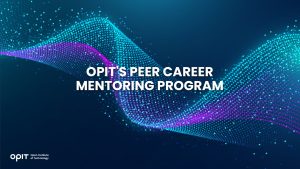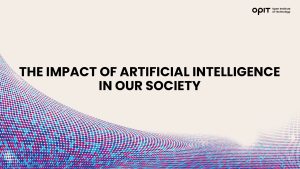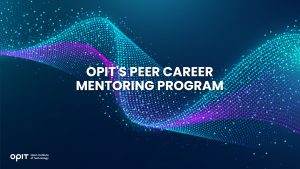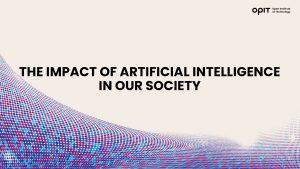Zorina Alliata Of Open Institute of Technology On Five Things You Need To Create A Highly Successful Career In The AI Industry


Source:
- Authority Magazine Medium, Published on September 15th, 2024.
Gaining hands-on experience through projects, internships, and collaborations is vital for understanding how to apply AI in various industries and domains. Use Kaggle or get a free cloud account and start experimenting. You will have projects to discuss at your next interviews.
By David Leichner, CMO at Cybellum
14 min read
Artificial Intelligence is now the leading edge of technology, driving unprecedented advancements across sectors. From healthcare to finance, education to environment, the AI industry is witnessing a skyrocketing demand for professionals. However, the path to creating a successful career in AI is multifaceted and constantly evolving. What does it take and what does one need in order to create a highly successful career in AI?
In this interview series, we are talking to successful AI professionals, AI founders, AI CEOs, educators in the field, AI researchers, HR managers in tech companies, and anyone who holds authority in the realm of Artificial Intelligence to inspire and guide those who are eager to embark on this exciting career path.
As part of this series, we had the pleasure of interviewing Zorina Alliata.
Zorina Alliata is an expert in AI, with over 20 years of experience in tech, and over 10 years in AI itself. As an educator, Zorina Alliata is passionate about learning, access to education and about creating the career you want. She implores us to learn more about ethics in AI, and not to fear AI, but to embrace it.
Thank you so much for joining us in this interview series! Before we dive in, our readers would like to learn a bit about your origin story. Can you share with us a bit about your childhood and how you grew up?
I was born in Romania, and grew up during communism, a very dark period in our history. I was a curious child and my parents, both teachers, encouraged me to learn new things all the time. Unfortunately, in communism, there was not a lot to do for a kid who wanted to learn: there was no TV, very few books and only ones that were approved by the state, and generally very few activities outside of school. Being an “intellectual” was a bad thing in the eyes of the government. They preferred people who did not read or think too much. I found great relief in writing, I have been writing stories and poetry since I was about ten years old. I was published with my first poem at 16 years old, in a national literature magazine.
Can you share with us the ‘backstory’ of how you decided to pursue a career path in AI?
I studied Computer Science at university. By then, communism had fallen and we actually had received brand new PCs at the university, and learned several programming languages. The last year, the fifth year of study, was equivalent with a Master’s degree, and was spent preparing your thesis. That’s when I learned about neural networks. We had a tiny, 5-node neural network and we spent the year trying to teach it to recognize the written letter “A”.
We had only a few computers in the lab running Windows NT, so really the technology was not there for such an ambitious project. We did not achieve a lot that year, but I was fascinated by the idea of a neural network learning by itself, without any programming. When I graduated, there were no jobs in AI at all, it was what we now call “the AI winter”. So I went and worked as a programmer, then moved into management and project management. You can imagine my happiness when, about ten years ago, AI came back to life in the form of Machine Learning (ML).
I immediately went and took every class possible to learn about it. I spent that Christmas holiday coding. The paradigm had changed from when I was in college, when we were trying to replicate the entire human brain. ML was focused on solving one specific problem, optimizing one specific output, and that’s where businesses everywhere saw a benefit. I then joined a Data Science team at GEICO, moved to Capital One as a Delivery lead for their Center for Machine Learning, and then went to Amazon in their AI/ML team.
Can you tell our readers about the most interesting projects you are working on now?
While I can’t discuss work projects due to confidentiality, there are some things I can mention! In the last five years, I worked with global companies to establish an AI strategy and to introduce AI and ML in their organizations. Some of my customers included large farming associations, who used ML to predict when to plant their crops for optimal results; water management companies who used ML for predictive maintenance to maintain their underground pipes; construction companies that used AI for visual inspections of their buildings, and to identify any possible defects and hospitals who used Digital Twins technology to improve patient outcomes and health. It is amazing to see how much AI and ML are already part of our everyday lives, and to recognize some of it in the mundane around us.
None of us are able to achieve success without some help along the way. Is there a particular person who you are grateful for who helped get you to where you are? Can you share a story about that?
When you are young, there are so many people who step up and help you along the way. I have had great luck with several professors who have encouraged me in school, and an uncle who worked in computers who would take me to his office and let me play around with his machines. I now try to give back and mentor several young people, especially women who are trying to get into the field. I volunteer with AnitaB and Zonta, as well as taking on mentees where I work.
As with any career path, the AI industry comes with its own set of challenges. Could you elaborate on some of the significant challenges you faced in your AI career and how you managed to overcome them?
I think one major challenge in AI is the speed of change. I remember after spending my Christmas holiday learning and coding in R, when I joined the Data Science team at GEICO, I realized the world had moved on and everyone was now coding in Python. So, I had to learn Python very fast, in order to understand what was going on.
It’s the same with research — I try to work on one subject, and four new papers are published every week that move the goal posts. It is very challenging to keep up, but you just have to adapt to continuously learn and let go of what becomes obsolete.
Ok, let’s now move to the main part of our interview about AI. What are the 3 things that most excite you about the AI industry now? Why?
1. Creativity
Generative AI brought us the ability to create amazing images based on simple text descriptions. Entire videos are now possible, and soon, maybe entire movies. I have been working in AI for several years and I never thought creative jobs will be the first to be achieved by AI. I am amazed at the capacity of an algorithms to create images, and to observe the artificial creativity we now see for the first time.
2. Abstraction
I think with the success and immediate mainstream adoption of Generative AI, we saw the great appetite out there for automation and abstraction. No one wants to do boring work and summarizing documents; no one wants to read long websites, they just want the gist of it. If I drive a car, I don’t need to know how the engine works and every equation that the engineers used to build it — I just want my car to drive. The same level of abstraction is now expected in AI. There is a lot of opportunity here in creating these abstractions for the future.
3. Opportunity
I like that we are in the beginning of AI, so there is a lot of opportunity to jump in. Most people who are passionate about it can learn all about AI fully online, in places like Open Institute of Technology. Or they can get experience working on small projects, and then they can apply for jobs. It is great because it gives people access to good jobs and stability in the future.
What are the 3 things that concern you about the AI industry? Why? What should be done to address and alleviate those concerns?
1. Fairness
The large companies that build LLMs spend a lot of energy and money into making them fair. But it is not easy. Us, as humans, are often not fair ourselves. We even have problems agreeing what fairness even means. So, how can we teach the machines to be fair? I think the responsibility stays with us. We can’t simply say “AI did this bad thing.”
2. Regulation
There are some regulations popping up but most are not coordinated or discussed widely. There is controversy, such as regarding the new California bill SB1047, where scientists take different sides of the debate. We need to find better ways to regulate the use and creation of AI, working together as a society, not just in small groups of politicians.
3. Awareness
I wish everyone understood the basics of AI. There is denial, fear, hatred that is created by doomsday misinformation. I wish AI was taught from a young age, through appropriate means, so everyone gets the fundamental principles and understands how to use this great tool in their lives.
For a young person who would like to eventually make a career in AI, which skills and subjects do they need to learn?
I think maybe the right question is: what are you passionate about? Do that, and see how you can use AI to make your job better and more exciting! I think AI will work alongside people in most jobs, as it develops and matures.
But for those who are looking to work in AI, they can choose from a variety of roles as well. We have technical roles like data scientist or machine learning engineer, which require very specialized knowledge and degrees. They learn computing, software engineering, programming, data analysis, data engineering. There are also business roles, for people who understand the technology well but are not writing code. Instead, they define strategies, design solutions for companies, or write implementation plans for AI products and services. There is also a robust AI research domain, where lots of scientists are measuring and analyzing new technology developments.
With Generative AI, new roles appeared, such as Prompt Engineer. We can now talk with the machines in natural language, so speaking good English is all that’s required to find the right conversation.
With these many possible roles, I think if you work in AI, some basic subjects where you can start are:
- Analytics — understand data and how it is stored and governed, and how we get insights from it.
- Logic — understand both mathematical and philosophical logic.
- Fundamentals of AI — read about the history and philosophy of AI, models of thinking, and major developments.
As you know, there are not that many women in the AI industry. Can you advise what is needed to engage more women in the AI industry?
Engaging more women in the AI industry is absolutely crucial if you want to build any successful AI products. In my twenty years career, I have seen changes in the tech industry to address this gender discrepancy. For example, we do well in school with STEM programs and similar efforts that encourage girls to code. We also created mentorship organizations such as AnitaB.org who allow women to connect and collaborate. One place where I think we still lag behind is in the workplace. When I came to the US in my twenties, I was the only woman programmer in my team. Now, I see more women at work, but still not enough. We say we create inclusive work environments, but we still have a long way to go to encourage more women to stay in tech. Policies that support flexible hours and parental leave are necessary, and other adjustments that account for the different lives that women have compared to men. Bias training and challenging stereotypes are also necessary, and many times these are implemented shoddily in organizations.
Ethical AI development is a pressing concern in the industry. How do you approach the ethical implications of AI, and what steps do you believe individuals and organizations should take to ensure responsible and fair AI practices?
Machine Learning and AI learn from data. Unfortunately, lot of our historical data shows strong biases. For example, for a long time, it was perfectly legal to only offer mortgages to white people. The data shows that. If we use this data to train a new model to enhance the mortgage application process, then the model will learn that mortgages should only be offered to white men. That is a bias that we had in the past, but we do not want to learn and amplify in the future.
Generative AI has introduced a new set of fresh risks, the most famous being the “hallucinations.” Generative AI will create new content based on chunks of text it finds in its training data, without an understanding of what the content means. It could repeat something it learned from one Reddit user ten years ago, that could be factually incorrect. Is that piece of information unbiased and fair?
There are many ways we fight for fairness in AI. There are technical tools we can use to offer interpretability and explainability of the actual models used. There are business constraints we can create, such as guardrails or knowledge bases, where we can lead the AI towards ethical answers. We also advise anyone who build AI to use a diverse team of builders. If you look around the table and you see the same type of guys who went to the schools, you will get exactly one original idea from them. If you add different genders, different ages, different tenures, different backgrounds, then you will get ten innovative ideas for your product, and you will have addressed biases you’ve never even thought of.
Read the full article below:
Related posts

The Open Institute of Technology (OPIT) is the perfect place for those looking to master the core skills and gain the fundamental knowledge they need to enter the exciting and dynamic environment of the tech industry. While OPIT’s various degrees and courses unlock the doors to numerous careers, students may not know exactly which line of work they wish to enter, or how, exactly, to take the next steps.
That’s why, as well as providing exceptional online education in fields like Responsible AI, Computer Science, and Digital Business, OPIT also offers an array of career-related services, like the Peer Career Mentoring Program. Designed to provide the expert advice and support students need, this program helps students and alumni gain inspiration and insight to map out their future careers.
Introducing the OPIT Peer Career Mentoring Program
As the name implies, OPIT’s Peer Career Mentoring Program is about connecting students and alumni with experienced peers to provide insights, guidance, and mentorship and support their next steps on both a personal and professional level.
It provides a highly supportive and empowering space in which current and former learners can receive career-related advice and guidance, harnessing the rich and varied experiences of the OPIT community to accelerate growth and development.
Meet the Mentors
Plenty of experienced, expert mentors have already signed up to play their part in the Peer Career Mentoring Program at OPIT. They include managers, analysts, researchers, and more, all ready and eager to share the benefits of their experience and their unique perspectives on the tech industry, careers in tech, and the educational experience at OPIT.
Examples include:
- Marco Lorenzi: Having graduated from the MSc in Applied Data Science and AI program at OPIT, Marco has since progressed to a role as a Prompt Engineer at RWS Group and is passionate about supporting younger learners as they take their first steps into the workforce or seek career evolution.
- Antonio Amendolagine: Antonio graduated from the OPIT MSc in Applied Data Science and AI and currently works as a Product Marketing and CRM Manager with MER MEC SpA, focusing on international B2B businesses. Like other mentors in the program, he enjoys helping students feel more confident about achieving their future aims.
- Asya Mantovani: Asya took the MSc in Responsible AI program at OPIT before taking the next steps in her career as a Software Engineer with Accenture, one of the largest IT companies in the world, and a trusted partner of the institute. With a firm belief in knowledge-sharing and mutual support, she’s eager to help students progress and succeed.
The Value of the Peer Mentoring Program
The OPIT Peer Career Mentoring Program is an invaluable source of support, inspiration, motivation, and guidance for the many students and graduates of OPIT who feel the need for a helping hand or guiding light to help them find the way or make the right decisions moving forward. It’s a program built around the sharing of wisdom, skills, and insights, designed to empower all who take part.
Every student is different. Some have very clear, fixed, and firm objectives in mind for their futures. Others may have a slightly more vague outline of where they want to go and what they want to do. Others live more in the moment, focusing purely on the here and now, but not thinking too far ahead. All of these different types of people may need guidance and support from time to time, and peer mentoring provides that.
This program is also just one of many ways in which OPIT bridges the gaps between learners around the world, creating a whole community of students and educators, linked together by their shared passions for technology and development. So, even though you may study remotely at OPIT, you never need to feel alone or isolated from your peers.
Additional Career Services Offered by OPIT
The Peer Career Mentoring Program is just one part of the larger array of career services that students enjoy at the Open Institute of Technology.
- Career Coaching and Support: Students can schedule one-to-one sessions with the institute’s experts to receive insightful feedback, flexibly customized to their exact needs and situation. They can request resume audits, hone their interview skills, and develop action plans for the future, all with the help of experienced, expert coaches.
- Resource Hub: Maybe you need help differentiating between various career paths, or seeing where your degree might take you. Or you need a bit of assistance in handling the challenges of the job-hunting process. Either way, the OPIT Resource Hub contains the in-depth guides you need to get ahead and gain practical skills to confidently move forward.
- Career Events: Regularly, OPIT hosts online career event sessions with industry experts and leaders as guest speakers about the topics that most interest today’s tech students and graduates. You can join workshops to sharpen your skills and become a better prospect in the job market, or just listen to the lessons and insights of the pros.
- Internship Opportunities: There are few better ways to begin your professional journey than an internship at a top-tier company. OPIT unlocks the doors to numerous internship roles with trusted institute partners, as well as additional professional and project opportunities where you can get hands-on work experience at a high level.
In addition to the above, OPIT also teams up with an array of leading organizations around the world, including some of the biggest names, including AWS, Accenture, and Hype. Through this network of trust, OPIT facilitates students’ steps into the world of work.
Start Your Study Journey Today
As well as the Peer Career Mentoring Program, OPIT provides numerous other exciting advantages for those who enroll, including progressive assessments, round-the-clock support, affordable rates, and a team of international professors from top universities with real-world experience in technology. In short, it’s the perfect place to push forward and get the knowledge you need to succeed.
So, if you’re eager to become a tech leader of tomorrow, learn more about OPIT today.

The world has entered the age of artificial intelligence (AI), and this exciting new technology is already changing the face of society in an ever-growing number of ways. It’s influencing a plethora of industries and sectors, from healthcare and education to finance and urban planning. This guide explores AI’s impact on three of the core pillars of life: business, education, and sustainability.
AI in Business: Unlocking Unprecedented Opportunities
In the world of business, the number of uses of AI is growing by the day. Whether it’s in sales, marketing, customer relations, operational optimization, cybersecurity, data management, or some other aspect of organizational life, there are so many ways this technology can unlock new opportunities or expedite existing processes.
Take data as an example. Many businesses now collect and use large amounts of data to inform their decisions in areas like product development or marketing strategy. But they have, up to now, been limited in how they can structure, visualize, and analyze their data. AI changes all that, as it can dig into vast databases with ease, extracting insights to drive actionable decisions in no time.
AI also bridges gaps in communications. It has the power to speak in most major languages, translating audio or written text with astonishing accuracy in an instant. In a globalized world, where many businesses buy and sell with partners, suppliers, investors, and other stakeholders from other nations, AI can help them communicate and exchange information more easily and reliably.
AI in Education: Democratizing and Accelerating the Learning Process
In the educational sector, AI is solving problems that have plagued this industry for generations and transforming the ways in which students learn and teachers teach. It can be used, for example, to personalize a student’s learning plan or adapt content to align with each learner’s favored learning style, making it easier for them to soak up and retain information and skills.
AI’s generative capabilities are also proving useful in the education sector. Teachers, for example, can turn to generative AI models to create lesson plans or supplementary content to support their courses, such as tables, charts, infographics, and images. This all helps to make the learning experience more diverse, dynamic, and engaging for every kind of learner.
On a broader level, there’s clear potential for AI to democratize education across the globe, making learning more accessible to all. That includes those in developing nations who may normally lack opportunities to gain knowledge and skills to achieve their ambitions. If harnessed correctly and responsibly, this technology could elevate education to whole new heights.
AI in Sustainability: Smarter Cities and Next-Level Efficiency
Sustainability is one of the sticking points when talking about AI, as many critics of the technology point to the fact that it involves huge amounts of energy and relies heavily on large and costly data centers to operate. At the same time, AI could also solve many of the sustainability crises facing the world today, uncovering solutions and innovations that may have previously taken decades to develop.
It’s already proving its value in this domain. For instance, DeepMind developed an AI system that was actually able to optimize data center energy efficiency, cutting the amount of energy used to cool data center hardware by a whopping 40% and improving energy efficiency in certain centers by 15%. That’s just one example, and it’s only the start of what AI could do from an environmental perspective.
This tech is also making cities smarter, more efficient, and more pleasant in which to live through AI-powered navigation aids or traffic redistribution systems. It also holds potential for future urban planning, city development, and infrastructure construction, provided the correct systems and frameworks can be established to make the best use of AI’s advantages.
The Ethical Challenges and Risks of AI
Despite its almost countless advantages and possible applications, AI is not without its flaws. This technology brings challenges and risks to go along with its opportunities, and five leading examples include:
- Bias: Algorithmic bias is an issue that has already presented itself during the relatively brief existence of AI so far. Some systems, for example, have issued responses or generated content that could be classified as discriminatory or prejudiced, due to the training data they were given.
- Privacy: There are fears among populations and analysts about the amount of data being fed into AI systems and how such data could be misused, potentially violating people’s rights of privacy and falling foul of data privacy regulations, such as GDPR.
- Misuse: Like so many game-changing technologies, AI has the potential to be used for both benevolent and malicious purposes. It may be used to spread misinformation and “fake news,” influence public opinion, or even in cyber-attacks, for instance.
- Over-reliance: AI is so powerful, with the capacity to carry out tasks with remarkable precision and speed, that it will be tempting for organizations to integrate it into many of their workflows and decision-making processes. But AI cannot be treated as a substitute for human judgment.
- Sustainability: There are also fears about the energy costs associated with AI and the data centers needed to power it, plus the fact that some elements of the burgeoning AI industry may exploit workers in poorer nations worldwide.
Solving These Challenges: Regulation and Responsible Use of AI
With the right approach, it is possible to solve all the above challenges, and more, making AI the most valuable and beneficial new technology the world has seen since the advent of the internet. This will require a two-pronged strategy focusing on both regulation and responsible usage.
Europe is already leading the way in the first aspect. It has introduced the AI Act – a world-first regulatory framework related to artificial intelligence, laying out how it should be used to drive innovation without infringing on the fundamental rights of workers and the larger public.
Educational institutions like the OPIT – Open Institute of Technology are also leading the way in the second aspect, educating people around the world on how to work with AI in a responsible, ethical way, through programs like the MSc in Responsible Artificial Intelligence.
By establishing rules and regulations about AI’s usage and educating the tech leaders of tomorrow in how to work with AI in a fair and responsible way, the future is bright for this exciting and extraordinary new technology.
Have questions?
Visit our FAQ page or get in touch with us!
Write us at +39 335 576 0263
Get in touch at hello@opit.com
Talk to one of our Study Advisors
We are international
We can speak in:


